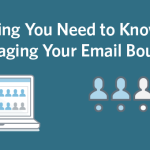Tactics to build customer trust in your marketing through transparent data practices and consent-driven personalization.

Recently, marketers have been stuck in a bit of a Catch-22. Personalization is at the forefront; it’s an expectation for customers and has become one of the most powerful tools in the marketer’s arsenal. At the same time, customers are increasingly concerned about the what, why and how of their data. They want to know what’s being collected, why we’re collecting it and how it’s being used.
This leads us to a situation where data privacy is under stricter legislation, cookies are about to disappear and customers keep their data as close to their chests as possible.
It seems that we’re stuck between two extremes. On the one hand, customers want their online experience to be personalized, while on the other, they want their data to remain anonymous.
These seemingly conflicting desires present a difficult question: How do we deliver personalized experiences to our customers while ensuring that data privacy is front and center?
1. Don’t fear the cookie-less world
The age of third-party cookies is coming to an end. In August, Google will finally remove them from Chrome. Gone will be the days of third-party cookies tracking customers’ information and online activity, leaving the fate of targeted messaging seemingly up in the air.
This is likely a change we would’ve had to embrace with or without Google’s cookie deprecation. Consumers are driving the privacy issue. They want to feel more in control of their data and will move away from companies that fail to show the data transparency they desire.
This, in turn, means marketers need to look for new ways to navigate this shift. Those who do the absolute minimum to meet compliance requirements risk losing out to competitors who have embraced the focus on privacy and provide customers with complete oversight of how their data is being used.
Rather than fighting the inevitable, we should build strategies that showcase a privacy-first approach. Customers should be able to easily see the data they’ve shared and we must demonstrate the value they receive in exchange.
2. Get the most out of first-party data
Along with our approach to using data, the focus on privacy will also considerably impact how we collect it. First-party data will become an increasingly valuable commodity, gathered directly from our customers — through surveys, feedback forms and other direct interactions — handed over with explicit consent.
However, first-party data isn’t enough, unless you’re a tech giant like Meta or Google. Even if you have an abundance of it, you may not see the whole image without validation from other sources. This is where data enrichment comes into play.
Instead of relying solely on first-party data (which, while incredibly valuable, may only come through in dribs and drabs), we can pull in privacy-safe second and third-party data to create a holistic view of our current and potential customer base.
A centralized customer data platform (CDP) is essential for collating data from all sources while continually updating customer profiles. CDPs provide accurate insights into the customer base, allowing for improved segmentation and greater personalization. Ultimately, this lets marketers deliver a far superior experience to their customers.
3. The answer lies in AI
No matter their size, the shift in public perceptions surrounding data privacy affects every company. In response, many increasingly support marketing solutions that are both privacy-compliant and backed by AI.
These solutions — including Google Analytics 4 (GA4), consent mode and enhanced conversions — provide marketers with tools and features that help us reshape our strategies to become more privacy-centric.
This has also led to a greater emphasis on “black box” AI solutions like Google’s Performance Max and Meta’s Advantage+, with smart capabilities that can quickly analyze a huge amount of data and help us spot patterns we might have missed. Using these tools helps you close information gaps and make informed predictions to anticipate future customer behavior.
With AI-back campaigns, customer engagement and conversion rates can be greatly improved. Crucially, these highly tailored strategies can be backed by reliable data, given with consent.
Privacy is the future
Marketers must welcome this privacy-conscious future with open arms. We may have lost third-party cookies, but thanks to recent developments in AI and the advanced capabilities of CDPs, we have the necessary tools to adapt our marketing strategies for this new world.
With a renewed focus on data enrichment, we can still offer immense personalization while customers gain peace of mind knowing that their privacy is respected. By demonstrating transparency, we will strengthen brand loyalty and rebuild customer trust. By handing control of their data back to our customers, positive experiences can flourish.
The post Navigating personalization vs. privacy: 3 tips for delivering win-win customer experiences appeared first on MarTech.
(9)
Report Post





